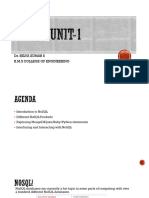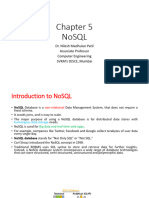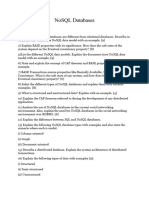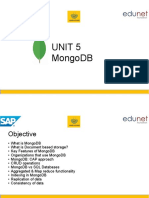0% found this document useful (0 votes)
16 views9 pagesLecture 8 Chapter 5 Part 4 Big Data Storage Concepts
The document discusses data models, emphasizing the distinction between SQL and NoSQL systems in big data storage. It outlines the limitations of traditional relational databases (RDBMS) in handling large-scale and unstructured data, leading to the emergence of NoSQL systems that prioritize flexibility and scalability. Key concepts such as ACID and BASE properties are explained, highlighting the trade-offs between consistency, availability, and partition tolerance in data management.
Uploaded by
Dina BardakjiCopyright
© © All Rights Reserved
We take content rights seriously. If you suspect this is your content, claim it here.
Available Formats
Download as PDF, TXT or read online on Scribd
0% found this document useful (0 votes)
16 views9 pagesLecture 8 Chapter 5 Part 4 Big Data Storage Concepts
The document discusses data models, emphasizing the distinction between SQL and NoSQL systems in big data storage. It outlines the limitations of traditional relational databases (RDBMS) in handling large-scale and unstructured data, leading to the emergence of NoSQL systems that prioritize flexibility and scalability. Key concepts such as ACID and BASE properties are explained, highlighting the trade-offs between consistency, availability, and partition tolerance in data management.
Uploaded by
Dina BardakjiCopyright
© © All Rights Reserved
We take content rights seriously. If you suspect this is your content, claim it here.
Available Formats
Download as PDF, TXT or read online on Scribd
/ 9






















































































































